20 Years of BHA at West Coast Casualty's CD Seminar: Chronicling BHA's Innovative Exhibits
May 03, 2018 —
Beverley BevenFlorez-CDJ STAFFThe Bert L. Howe & Associates, Inc., (BHA) exhibit has been a fixture at West Coast Casualty's Construction Defect Seminar since the mid-1990's. Through the years, BHA has updated their display, but no matter what year, you could count on the BHA exhibit to provide a not-to-be-missed experience.
2008-BHA's sleek, rear projection display includes a screen that promotes the firm's capabilities that can be seen throughout the exhibit hall. This would be one of many innovations BHA has brought to the West Coast Casualty seminar.
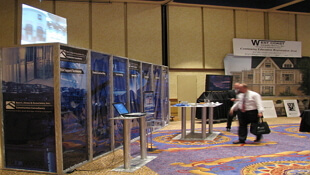
2009-With the success of the rear screen projection, BHA adds additional monitors to provide attendees with more information about BHA.
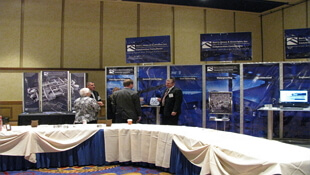
2010-BHA adds an interpretive professional development exhibit targeted to Building Envelope issues allowing adjusters and other non-construction professionals hands on access to the systems and components at the heart of many related such claims.



2011-BHA's Swing for Charity challenge is born.

2012-Always innovating, BHA expands its rear projection and professional development offerings to West Coast attendees.

2013-BHA showcases additional capabilities with a twenty-four foot, custom, convex, immersive video experience.

2014-BHA adds an iPhone display to give a hands-on demonstration of their data collection methods.
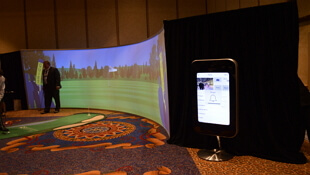
2015-BHA's twenty-four foot , custom, convex, immersive video experience was elevated with two additional rear projection screens, reflecting BHA's newest capabilities and services.

2016-BHA dazzles attendees with their new exhibit comprised of more than 15 integrated, high definition, LCD displays. iPads are stationed on tables to conveniently demonstrate BHA's data collection processes.
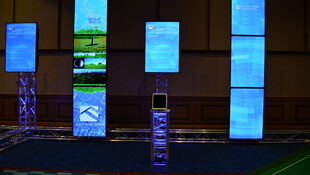
2017-BHA's Swing for Charity Golf Challenge raised $2,225.00 for the National Coalition for Homeless Veterans and $1,900 for Final Salute.
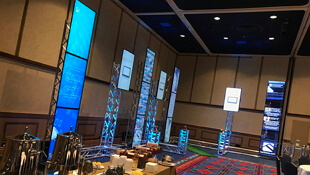
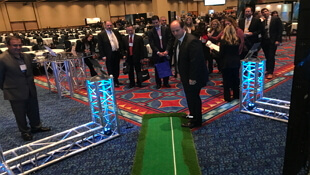
Read the court decisionRead the full story...Reprinted courtesy of
After More than Two Years, USDOT Rejects WSDOT’s Recommendation to Reinstate Non-Minority Women-Owned DBEs into DBE Participation Goals
February 24, 2020 —
Ellie Perka - Ahlers Cressman & Sleight PLLCFor the past several years, Ahlers Cressman & Sleight has been closely following news of Washington State Department of Transportation’s (“WSDOT’s”) exclusion of non-minority women-owned Disadvantaged Business Enterprises (“DBEs”)[1] from qualifying toward Condition of Award (“COA”) Goals on federally-funded projects. See ACS’s letter of January 9, 2014 and blog articles of June 2, 2017 and September 21, 2017.
In a striking—and long awaited—decision issued just days ago, USDOT rejected WSDOT’s recommendation to unwind the exclusion of non-minority women-owned DBEs from COA Goals, meaning women-owned DBEs in Washington remain excluded from DBE COA participation goals until September 2020.
As background, the DBE program is a program created by Congress with the goal of increasing women and minority-owned business participation in federally-funded transportation contracting. To withstand constitutional scrutiny, each state must tailor its program to the specific discrimination found to exist in that state.[2] To that end, every three years, WSDOT must conduct a “Disparity Study,” aimed at statistically measuring the “discrimination” in the marketplace.
Read the court decisionRead the full story...Reprinted courtesy of
Ellie Perka, Ahlers Cressman & Sleight PLLCMs. Perka may be contacted at
ellie.perka@acslawyers.com
Surety Trends to Keep an Eye on in the Construction Industry
March 25, 2024 —
Oliver Craig - Construction ExecutiveReflecting on the dynamics of the 2023 construction and surety industries, it is evident that opportunities and challenges have emerged for contractors that will shape the landscape for the year ahead. Contractors can not only capitalize on these trends but protect the successful companies they have already built.
PROJECT OPPORTUNITIES
There has been a notable increase in public works opportunities, driven by increased government spending and the aging infrastructure in the United States. This trend is expected to continue in 2024 and beyond, with a notable portion of work coming in transportation- and public-utility-related infrastructure.
Due to increased spending, many contractors are reporting historically high backlogs—and that often includes the largest project their company has contracted in their history. While increased spending presents more opportunity, it’s critical contractors be even more diligent about new opportunities, giving additional consideration to the following:
Job Selection: New geographies, scope, project owners and/or subcontractor relationships commonly come with a learning curve. With the current state of the market, it’s not the ideal time to be learning costly lessons. Contractors should focus on having a proactive go/no-go strategy when reviewing potential projects to identify risks early and plan accordingly.
Reprinted courtesy of
Oliver Craig, Construction Executive, a publication of Associated Builders and Contractors. All rights reserved.
Read the court decisionRead the full story...Reprinted courtesy of
The General Assembly Adds Some Clarity to Contracts and Unlicensed Contractors
March 28, 2018 —
Christopher G. Hill – Construction Law MusingsFor years, the statute regarding performing construction without a valid license (
Va. Code 54.1-1115) was a bit murky. While that statute listed several prohibited acts, among them contracting without the proper class of license or use of the license of another, the consequences of such activity, in particular the effect that such action would have on the enforcement of a construction contract (Section C of the statute), were less than clear.
Read the court decisionRead the full story...Reprinted courtesy of
Christopher G. Hill, The Law Office of Christopher G. Hill, PCMr. Hill may be contacted at
chrisghill@constructionlawva.com
Haight Brown & Bonesteel Attorneys Named Best Lawyers in America ® 2016
February 23, 2016 —
Haight Brown & Bonesteel LLPJanuary 21, 2016 - The Best Lawyers in America® 2016, is the oldest and most respected peer-review publication in the legal profession. Haight Brown & Bonesteel attorneys earning this honor for 2016 include the following:
William G. Baumgaertner - Personal Injury Litigation
Denis J. Moriarty - Insurance Law
Since its inception in 1983, Best Lawyers has become regarded as the definitive guide to legal excellence. Because Best Lawyers is based on an exhaustive peer-review survey in which more than 39,000 leading attorneys cast almost 3.1 million votes on the legal abilities of other lawyers in their practice areas, and because lawyers are not required or allowed to pay a fee to be listed, inclusion in Best Lawyers is considered a singular honor. Corporate Counsel magazine has called Best Lawyers “the most respected referral list of attorneys in practice.”
Read the court decisionRead the full story...Reprinted courtesy of
Haight Brown & Bonesteel LLP
Trade Contract Revisions to Address COVID-19
August 23, 2021 —
David R. Cook Jr. - Autry, Hall & Cook, LLPMany trade contracts contain a clause that may protect trade contractors from catastrophic events like pandemics. These clauses are known as force-majeure clauses (covering acts of God). They basically say if these unavoidable events happen, the contractor is relieved of its obligations to the extent of the impact.
However, many common industry forms have not been updated to specifically address COVID-19. (They may be waiting to see how the courts treat their existing language first.) So to ensure impacts from COVID-19 are covered, a trade contractor should consider expressly adding it to the force-majeure clause. See the example below.
Notably, typical force-majeure clauses do not say the trade contractor gets more money. So an escalation clause could be added to the force-majeure clause.
Read the court decisionRead the full story...Reprinted courtesy of
David R. Cook, Autry, Hall & Cook, LLPMr. Cook may be contacted at
cook@ahclaw.com
Green Construction Claims: More of the Same
May 10, 2021 —
Christopher G. Hill - Construction Law MusingsFor this week’s Guest Post Friday, Musings welcomes back Timothy R. Hughes, Esq., LEED AP. Tim (@timrhughes on Twitter) is a Shareholder in the Arlington, Virginia firm of Bean, Kinney & Korman, P.C. In his practice as a business, corporate, and construction law attorney, Tim was the Chair of the Construction Law and Public Contracts Section of the Virginia State Bar. He was recognized by Virginia Lawyer’s Weekly as a 2010 “Leader in the Law” and a member of the Legal Elite for Construction Law for 2010 by Virginia Business Magazine. A regular speaker and writer, Tim is the lead editor of his firm blog, Virginia Real Estate, Land Use and Construction Law.
Green construction liability risk has received a lot of discussion over time. My take is that sustainable design and construction projects present the same type of risk profile as other construction projects, with the caveat that there may be “a little more”. A little more risk. A little more lack of predictability. A little more process overlay. Thus, green construction claims really are just “more of the same”.
I have watched and participated in the discussion. With regards to the Chesapeake Bay Foundation building, the reality is that any project can face challenges of product specification and performance, green or not. We can see plenty of examples where products have created tremendous risk and liability to the construction industry, the avalanche of EIFS litigation and Chinese drywall standing as just two of the most recent examples. A product failed, but that is nothing truly new.
Read the court decisionRead the full story...Reprinted courtesy of
The Law Office of Christopher G. HillMr. Hill may be contacted at
chrisghill@constructionlawva.com
Public Policy Prevails: Homebuilders and Homebuyers Cannot Agree to Disclaim Implied Warranty of Habitability in Arizona
November 01, 2022 —
Ryan Bennett - The Subrogation StrategistIn Zambrano v. M & RC II LLC, et al., 2022 Ariz. LEXIS 309, the Supreme Court of Arizona held that a homebuilder and homebuyer could not waive or disclaim the implied warranty of workmanship and habitability. While the court would normally enforce a contract between two parties – even if one side made a “bad deal” – they will not do so if the contract’s terms are against public policy.
In this case, Tina Zambrano (Zambrano) signed a purchase agreement with the homebuilder to buy a newly built home. The agreement included provisions which expressly disclaimed any implied warranties, including the warranty of habitability and workmanship. After the purchase, Zambrano claimed that there were construction defects within the home, including popped nails in the drywall and issues with the home’s foundation. Zambrano sued the homebuilder for breach of the implied warranty of workmanship and habitability. The homebuilder moved for summary judgment based on the waivers within the contract and the trial court, agreeing that the waivers applied, dismissed the case. Zambrano appealed and the appellate court reversed the trial court’s decision. The appellate court specifically explained that Arizona has a public policy interest in protecting consumers.
Read the court decisionRead the full story...Reprinted courtesy of
Ryan Bennett, White and Williams LLPMr. Bennett may be contacted at
bennettr@whiteandwilliams.com




































































